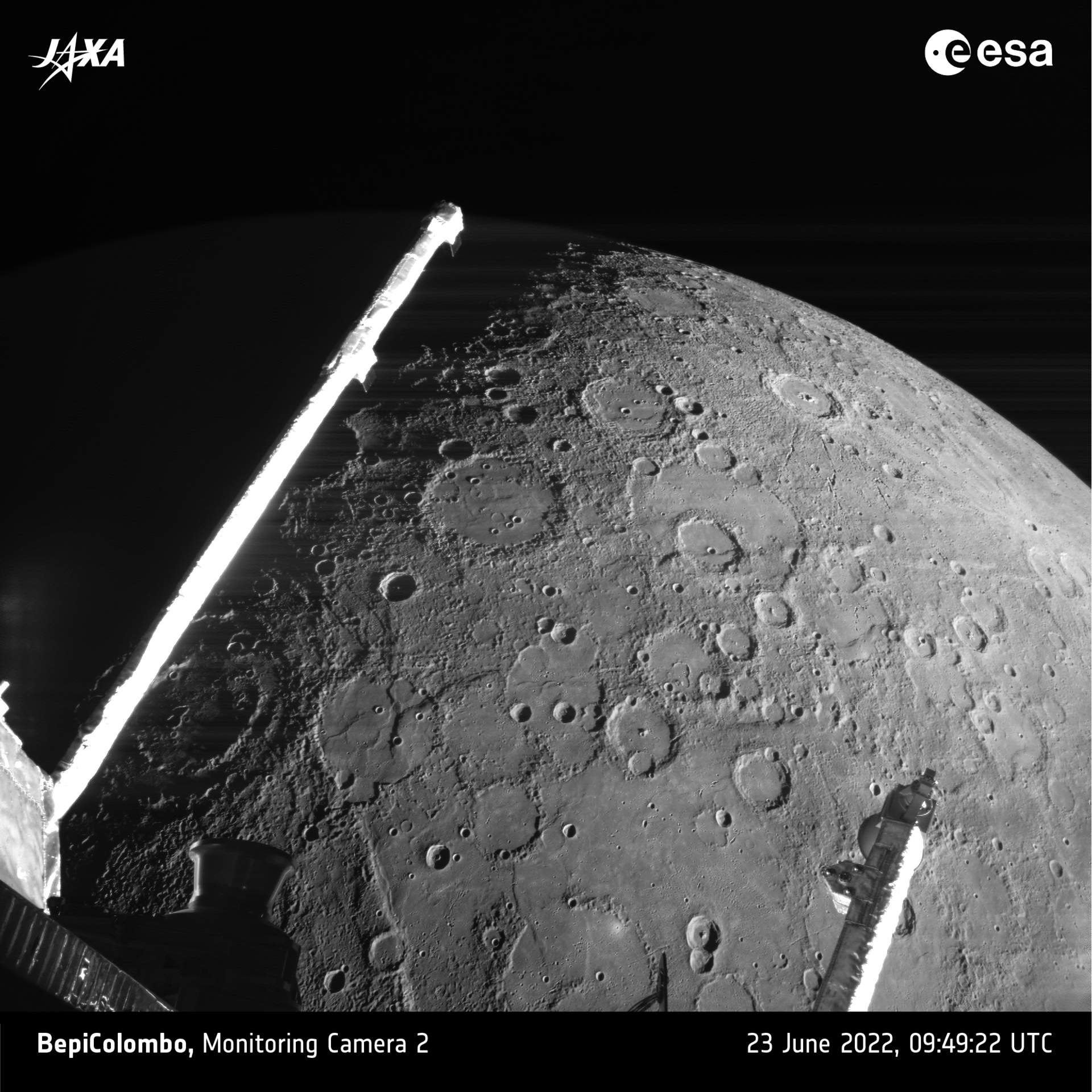
Space exploration is slow. It takes time to build missions; it takes time to fly missions to their destinations. It takes even more time to transform images into a new scientific understanding.
My favorite example of the slow march of science is the BepiColombo mission to Mercury. On June 23, this mission made its second flyby of its target, sending back stunning images of this poorly understood world.
In 2025, BepiColombo will enter orbit around Mercury in two parts: ESA’s Mercury Planetary Orbiter and JAXA’s Mercury Magnetospheric Orbiter. Together, these twinned spacecraft will study Mercury in gravity, magnetism, light, and chemistry, allowing us to understand how it is shaped from the inside out. For now, the mission is just going to fly by as it uses Mercury’s gravity to adjust its orbit. This is flyby two of six that BepiColombo will make of Mercury. It has also made one flyby of Earth and will make two of Venus.
This mission was initially thought through in the 1980s and 1990s. It was named in 1999. It will arrive at its target in 2025. This is multigenerational science, like Voyager, where the people who design the mission know it is the students of their day who will do the eventual science of tomorrow.
More Information
ESA press release




 Join the Crew!
Join the Crew!
 Escape Velocity Space News
Escape Velocity Space News
0 Comments